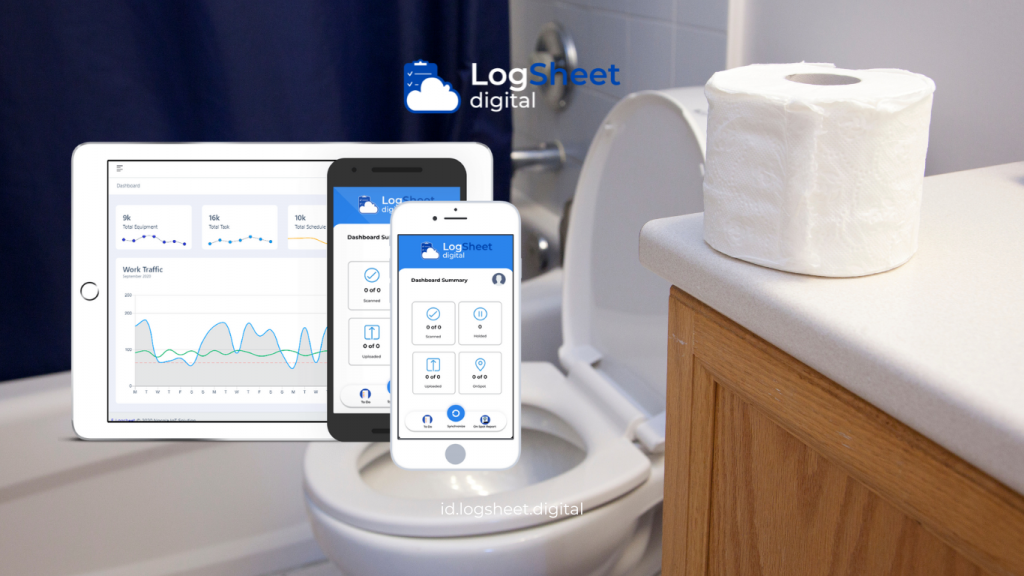In an increasingly digitally connected business world, effective asset management plays a crucial role in maintaining operational efficiency and productivity. One technology solution that is widely adopted today is the digital logsheet, which offers a modern way to record, monitor, and manage company assets. By implementing a digital logsheet, companies can optimize asset performance while improving data-driven decision-making. This article will discuss how to use digital logsheets for asset optimization and company performance, as well as the benefits that can be gained from their implementation.
1. What is a Digital Logsheet?

Read More: Implementing Digital Logsheets in Asset Risk Management
A digital logsheet is an electronic recording system that replaces manual methods in monitoring and recording activities related to company assets. Data such as asset condition, location, and performance is recorded automatically through sensors or manually entered into a cloud-based system or specialized software application. With organized and easily accessible data, companies can monitor asset conditions in real-time and make timely decisions.
1.1. Differences Between Manual and Digital Logsheets
Manual recording tends to be prone to errors, requires more time, and is difficult to manage in large volumes. In contrast, digital logsheets offer efficiency in data recording, allowing access anytime and from anywhere, while providing more accurate and real-time data. The shift to a digital system can enhance productivity and reduce the risk of losses due to inaccurate information.
2. Why are Digital Logsheets Important for Asset Optimization?

Read More: Applying Digital Logsheets in Asset Security Monitoring
Asset optimization is the effort to ensure that company assets are used to their fullest to support business objectives. By using digital logsheets, companies can enhance control over assets and extend asset lifespan through timely maintenance.
2.1. Real-Time Asset Performance Monitoring
One of the main advantages of digital logsheets is the ability to monitor asset performance in real-time. With continuously updated information, companies can know the condition of assets at any time, detect issues early, and avoid unexpected damage or failures.
2.2. Better Maintenance Planning
With complete data on usage history and asset condition, digital logsheets make it easier for companies to create more effective maintenance plans. The system can send automatic reminders when assets need servicing, allowing maintenance to be performed before damage occurs. Timely maintenance will extend asset life and prevent high repair costs.
2.3. Data-Driven Decision Making
By using digital logsheets, asset data can be analyzed to support better decision-making. For example, companies can observe asset usage patterns, detect assets that require more frequent maintenance, or identify inefficient assets that need to be replaced. Decisions based on this data will help companies manage assets more effectively.
3. Steps to Implement Digital Logsheets for Asset Optimization

Read More: Transforming Asset Industries: Benefits of Digital Logsheets in Management
Implementing digital logsheets for asset optimization requires careful planning and strategy. Here are some important steps to consider.
3.1. Identify Company Needs
The first step is to identify the specific needs of the company related to asset management. The company needs to determine which types of assets will be recorded in the digital logsheet, how the data will be used, and the objectives to be achieved, such as increased efficiency, reduced maintenance costs, or extended asset lifespan.
3.2. Choosing Software or System
Once the company identifies its needs, it must choose appropriate digital logsheet software or a system. The chosen system should meet the company’s requirements and integrate easily with existing technologies. When selecting a system, consider features like automated reporting, maintenance reminders, and real-time monitoring.
3.3. Employee Training
For the digital logsheet system to function optimally, it is important for employees to be trained to use the system. This training should cover how to enter data, understand reports, and utilize the features available in the digital logsheet to support asset optimization.
3.4. Integration with Other Systems
To maximize the benefits of the digital logsheet, companies should integrate it with other systems they use, such as computerized maintenance management systems (CMMS) or enterprise resource planning (ERP) software. This integration allows for smoother data flow and more efficient asset management.
3.5. Regular Monitoring and Evaluation
After the digital logsheet system is implemented, the company needs to conduct regular monitoring and evaluation. This is important to ensure that the system functions well and meets the established objectives. This evaluation can also help identify areas that need improvement or enhancement.
4. Benefits of Using Digital Logsheets for Asset Optimization and Performance

Read More: Using Digital Logsheets for Asset Condition Reporting
The implementation of digital logsheets in asset management provides significant benefits for companies. Some of these include:
4.1. Maintenance Cost Savings
With better monitoring and more regular maintenance, companies can save on asset maintenance costs. Damage can be prevented early, so companies do not need to incur large costs for emergency repairs.
4.2. Improving Operational Efficiency
Operational efficiency improves because data related to asset conditions and performance is available in real-time. This allows for quick action if any issues arise, minimizing operational downtime that can affect productivity.
4.3. Extended Asset Lifespan
By conducting regular maintenance based on accurate data, companies can extend asset lifespan. Well-maintained assets last longer and provide extended usability, leading to long-term investment savings.
4.4. Transparency and Accountability
With digital logsheets, all data related to assets is clearly recorded and accessible to stakeholders. This creates transparency in asset management, enhances employee accountability, and facilitates the asset audit process.
4.5. Ease of Reporting and Analysis
The digital logsheets system enables automatic report generation, allowing companies to analyze overall asset performance. This provides deeper insights and helps in long-term planning, including asset replacement strategies or new investments.
5. Case Study: Implementation of Digital Logsheets for Asset Optimization

Read More: Digital Logsheets: The Revolution in Industrial Asset Monitoring
Many companies across various industries have successfully implemented digital logsheets and seen significant improvements in asset management and performance.
For example, a logistics company using digital logsheets reported increased efficiency in monitoring the condition of their operational vehicles. Before implementing the digital system, the company often experienced unexpected vehicle downtime due to undetected damage. After switching to digital logsheets, the company could monitor vehicle conditions in real-time and perform timely maintenance, ultimately reducing downtime by up to 40%.
Conclusion

Read More: Digitalizing Asset Recording in Retail at Your Minimarket with Digital Logsheets
The use of digital logsheets in asset management is a strategic step that can help companies optimize their assets and performance. By leveraging digital technology, companies can monitor asset conditions in real-time, improve maintenance efficiency, and extend asset lifespan. Moreover, digital logsheets enable more accurate decision-making based on data, ultimately helping companies save costs and improve overall operational efficiency. With proper planning, adequate training, and integration with other systems, digital logsheets can become a superior solution in modern asset management.





leave your comments